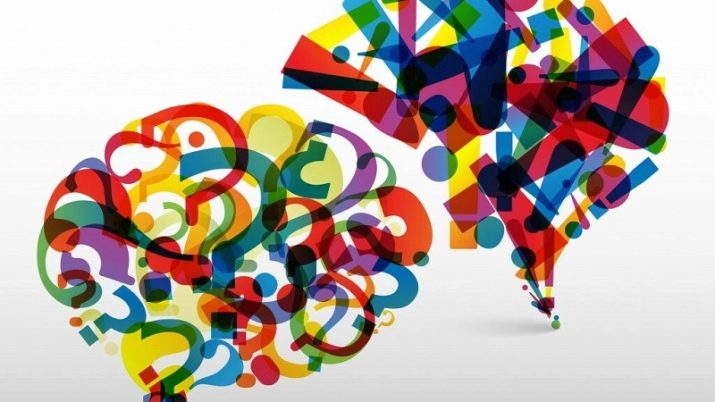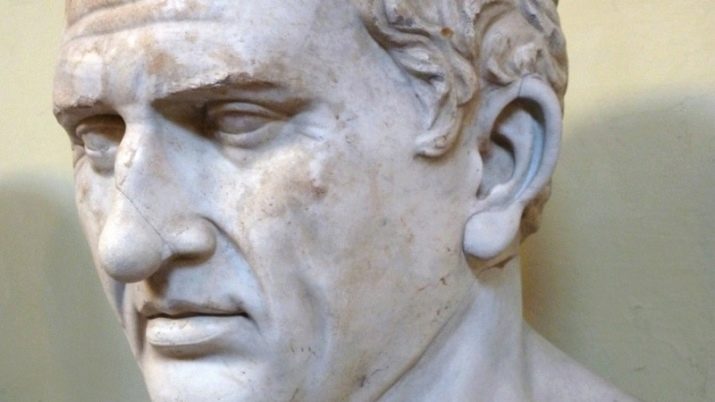What is the best way to memorize what you have read?

Have you ever read the text, but didn't really remember anything? How many students and schoolchildren have encountered something like this - you need to read a large amount of information and (ideally) remember at least 80 percent of it. And the brain refuses. But there are special techniques that will help you remember what you read, if not completely, then a lot of the text. Having mastered them, you will never again worry about what you read - it will be deposited in your head!

Fundamental rules
There are basic techniques that allow you to remember what you read.
- Understanding. A person remembers only what he understands. As soon as he grasped the thought inherent in the text, the beginning of the memorization process has already been laid. To check, it is enough to retell the content in other words. If you succeed, then you have memorized what you wrote.
- Intention. A person remembers what he decided to fix in his memory. The main thing is the desire to postpone what is needed in your memory. If it is, then the process of fixing information in memory will be successful.
- Cramming. This is perhaps the oldest method. It requires significant human effort, time-consuming and does not always give the desired result. However, if a person does not just memorize large chunks of text, but reads thoughtfully, critically comprehends it, draws up a plan or a synopsis, and then reinforces what he read by repeating, the chance of successful memorization increases greatly.
- Consistency... This method is good when you need to memorize a large number of dates. It is necessary to come up with a system for them, thanks to which it is you who will understand, comprehend, and therefore memorize what you read. Structure the text, then it will be much easier to fix it in memory in blocks.
- Associations. Try to think of something like "binding" to the information to be memorized. Then each definition will evoke certain associations in your memory, thanks to which you will remember the text as well.

The memorization sequence consists of 6 steps.
- Evaluating what needs to be stored in memory, allocating the read target. Understanding the complexity of the text is important at this stage.
- Choosing the right reading technique depending on what goal you are pursuing.
- Determination of important facts, memorization of the necessary. Search for associations, connecting details that are necessary to fix the read in memory.
- Formation of records by text. The use of your own abbreviations, signs, words to convey thoughts. At this stage, you can use any technique that helps you - the "tree" of ideas, building diagrams, identifying relationships, etc. Recordings are one of the most important reserves for awakening memory. By reading them later, you will be able to reconstruct almost the entire text in your head.
- Repetition... This can be done by forming questions about the text, retelling the text based on the notes made. It is better to retell not at once, but after several days after the formation of the records.
- Application of knowledge - final stage. Every knowledge needs to be used.
The more often you use it, the better you remember.

Comfortable conditions
There is one thing to remember - in any case, do not learn or memorize something really important in a rush, panic, stress, nervousness.
If possible, provide yourself with silence, peace, good light. To remember everything quickly and correctly, you need to tune in to fruitful work - sleep, rest, get rid of unnecessary thoughts and worries... Don't try to do everything quickly. Yes, you can quickly remember something in the first half hour, but with a high probability you will forget it just as quickly.
Reading speed
Do not hurry. Anything you have to remember should be read slowly and thoughtfully. Reading comprehension is very important., a thoughtless desire to read as much as possible in the shortest possible time will not give absolutely any benefit - you will remember the text badly, and the perception of what you read will be difficult.
Abstract
Surprisingly, the synopses of two people who listened to the same lecture or read the same textbooks differ. Because all people are different, they formulate, think and reason differently. It has long been noticed that a student, who has his own synopsis in his hands, navigates it better and more freely than if he has another person’s synopsis, even if it is very similar. This once again proves the importance of personal notes in the course of heard, read, seen.
A synopsis is something that seemed important to one specific person, which is why he will easily remember what he thought, what he felt and even what he did when he wrote it.

Memory training
Memory, like any feeling or state of a person, can be improved and trained. The less you force her to tense, the weaker she becomes. There are a great many techniques for training memory, however, the most effective are still the following options:
- poems memorized, preferably little-known and difficult to memorize;
- learn one word a day in different languages: say, "scissors" - in English, German, Polish, Swedish and Spanish;
- learn foreign languages;
- read encyclopedias and reference books, memorize information, etc.
Best Techniques
Personal notes are something that people often forget about when reading. But this method is nothing more than a written fixation of the main idea. You can underline the wording you like or write it out in a specially designed notebook.Later, looking at your notes, you will be able to recall most of what you read, especially if you did not read fluently, but deliberately.
If you work with a significant amount of information, try cataloging it into subgroups. For example, "quotes", "ideas", "slogans", etc. If you have read non-fiction on a topic that is quite applicable in life, apply what is advised in the book.
Describe your impressions on this matter, record what is happening to you, and how your life changes from the introduction of advice from the book.

Visualization
Visualization is a great way of remembering information for people who think in pictures. If you are reading a fiction book, a movie is probably unfolding before your eyes - you see the heroes, watch how they act in given circumstances, follow the development of events. You should do the same with any text that you need to fix in your memory - be it an essay about a winter forest or an article on the benefits of bequesting an apartment over a donation agreement. Only the visualization should be a little different, the kind that will help you remember a little better.
Perhaps it will be combined with the method of associations, that is, you are not visualizing exactly a picture from what you read, but the association that you will have in connection with reading. This works according to the same scheme according to which we, upon hearing a song, recall how we danced to it with a cute classmate, and mentally transfer ourselves to that time. Thus, one can recall not only the events that took place at that time, but also conversations, smells, who was dressed in what and how they combed their hair - after all, all this information is stored in our memory, never disappearing from it, and only depends on us, will we remember her.

Associations
One of the most affordable and at the same time easy ways - come up with associations with what you read about and what you need to fix in memory... These can be the first letters of words, or, conversely, if you need to remember the letter code (EAMDKT, for example), come up with a sentence where each letter will be the beginning of each word (the spruce avocado moved gently towards the plate). You can come up with absolutely any associations that will help you remember better - color, digital, visual, auditory.
Coming up with completely stupid, at first glance, sentences is quite justified - we give them meaning, which means we remember them perfectly. When we come up with a proposal, we visualize it, that is, we see through the eyes of the soul of an avocado moving towards the plate. As soon as we saw this, we remembered it.

Repetition method I.A. Korsakov
A very peculiar method of memorization was proposed by I.A.Korsakov. It is based on repeated recall... The material is offered to be memorized using any of the mnemonic techniques convenient for you, after which, without peeping (since it is assumed that you remember everything), remember - write out or reproduce in any other way, for example, by dictating to the phone all the information that you have memorized.
Next, you need to check with the source of information. If there are errors or you missed something, then you need to remember this information again, and then recall it again. Once you have reproduced all the information correctly and without gaps, you need to start recalling it many times, that is, reproducing it many times without checking it with the original source.
Cicero's method
This method is very simple and extremely effective. It is based on the so-called the arrangement of the memorized units of information in the room, which is well known to the memorizer, in order. If you did everything correctly, then as soon as you remember the situation in this room, you will reproduce the information that you memorized. This is how Cicero acted, preparing to speak to the public - he paced the rooms of his house and was engaged in the arrangement of the key points of his speech.
If you want to try this memorization improvement technique, decide what sequence you will have while walking around the premises. Decide where you will place what you want to remember.
If you have a lot to remember, write down a list of placements. In the future, you can do without a list.

Pictograms
This method was proposed by A.R. Luria and was originally offered for memorization to children. Its essence is that some words in the amount of 20 or more were read to the child. For every word he was offered draw a so-called pictogram, that is, a schematic drawing that would reflect the essence of the named concept. Further, the child had to, looking at each of the pictograms, remember what concept he "encoded" in it. This did not happen immediately, but after half an hour or an hour.
Recommendations
The dossier technique works well - from person to book. If you need to remember information about a person - create a file where you upload his photo and biography, but not widespread facts, but what you personally formulated. The same goes for the book - cover, summary, favorite quotes, your thoughts on what you read.
Pay attention - it is easier for someone to remember the text that he types on a computer, while someone has a close connection between writing information by hand with a pen and putting it in memory. Therefore, knowing yourself, choose the method that suits you personally. - whether it is writing in a notebook or on the phone.
The resurgent and growing book clubs are a great opportunity to read and discuss a book with people who are passionate about reading. This will not only help to better remember the content of the book, but also show the events in it from the point of view of other readers, and this may be an opinion that is completely opposite to yours. You will certainly not forget that!
Review writing is another great way to memorize the content of a book. Create a profile on one of the book discussion sites, or even an online bookstore, and write reviews for every book you read.
You will not only memorize everything you read, you will learn to formulate your thoughts better, and you will also receive bonuses for paying for orders in the online store. For the written reviews of books, the largest online bookstores provide this opportunity.









